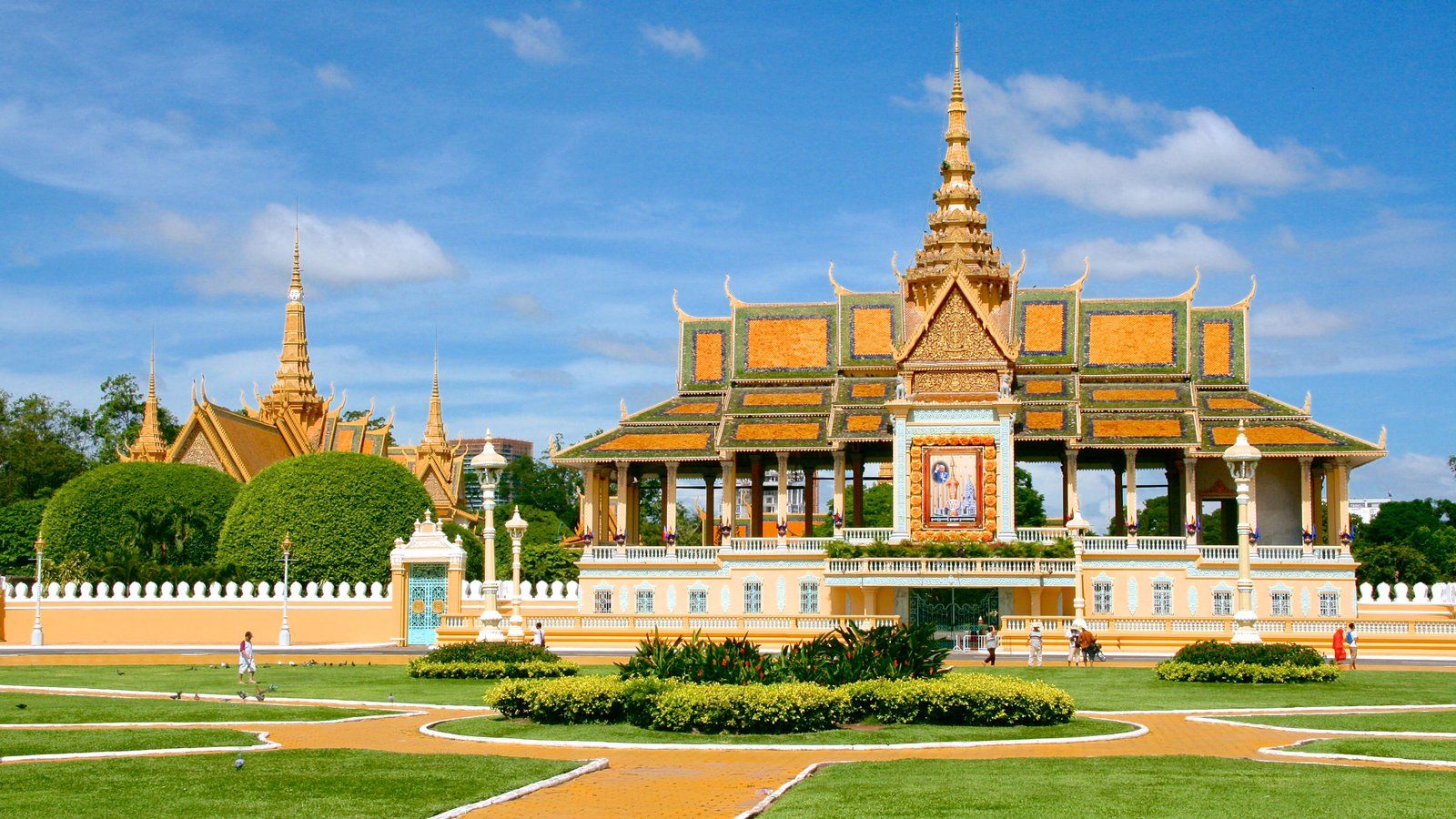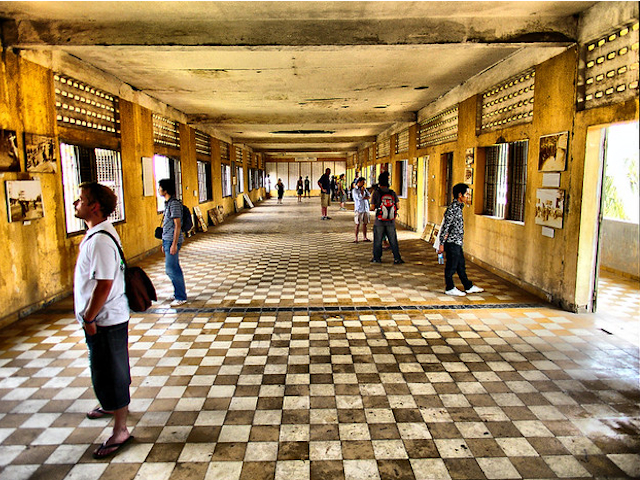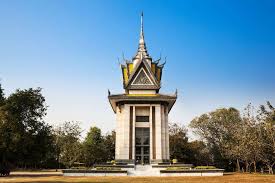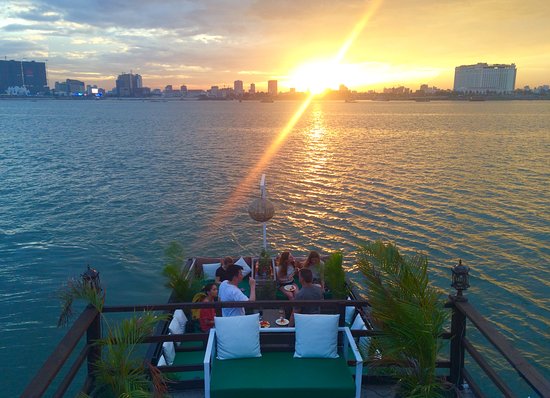Phnom Penh is also home to many of the country’s most outstanding temples and impressive museums. If you have only 24 hours to explore this city, here is our list of places that cannot be missed.
TABLE OF CONTENTS
1
What To Do In Phnom Penh If We Have Only 1 Day?
Wat Phnom
Royal Palace and Silver Pagoda
National Museum
Tuol Sleng Genocide Museum
Choeung Ek Killing Field
Art-Deco Central Market
A long history with many ups and downs has turned Phnom Penh into an interesting stopover for many tourists. This city was once the capital of the Kingdom of Cambodia. Later, it was used as the Headquarter of the French colonial government and occupied by the Khmer Rouge from 1975 to 1979.
Today, Phnom Penh is the economic and political capital of Cambodia. The city is also home to many of the country’s most outstanding temples and impressive museums. If you have only 24 hours to explore this city, here is our list of places that cannot be missed.
What To Do In Phnom Penh If We Have Only 1 Day?

Wat Phnom
We can start our visit early in the morning to avoid the day heat at Wat Phnom, a temple associated with the city’s history. Set atop a hill to the north of Phnom Penh, 27 metres (88.5 ft) above the ground, this is the tallest religious structure in the city.
The temple was constructed in the 14th century and was restored and rebuilt several times throughout the city’s history, in 1434, 1806, 1894 and 1926. Today, Wat Phnom is the symbol of Phnom Penh and is regularly visited by local devotees who come for prayers, bring small offerings, or participate in meditations.

Wat Phnom
Royal Palace and Silver Pagoda
Royal Palace and Silver Pagoda, 2 unique architectural works set adjacent to each other, spanning 174,870 square meters of breathtaking Khmer architecture and lush greenery.
The Royal Palace has been the residence of Cambodia's royal family since the 1860s. The spired-roof pavilions of the complex are an excellent example of classic Khmer architecture.

Both the Throne Hall area and the Silver Pagoda are open to public for visiting. The Throne Hall was built in 1917, replacing an earlier wooden structure. The Silver Pagoda, originally constructed of wood in 1866, was expanded in 1962 by King Sihanouk, being the home of the Emerald Buddha statue and a mammoth 90-kilogram Gold Buddha statue studded with thousands of diamonds.

Royal Palace and Silver Pagoda
National Museum
Our next stop is the National Museum of Cambodia, the country’s leading historical and archaeological museum. The museum buildings, inspired by Khmer temple architecture, were constructed between 1917 and 1924, and renovated in 1968.
The museum houses one of the world's largest collections of Khmer art, including sculptural, ceramics, bronzes, and ethnographic objects. It reserves over 14,000 items, from prehistoric times to periods before, during, and after the Khmer Empire. A religious function is also served at the museum; its collection of important Buddhist and Hindu sculpture addresses community religious needs as a place of worship.

National Museum of Cambodia
Let's make a stop for photo-shooting at the Independence Monument, a majestic structure that dominates Phnom Penh city centre. The Independence Monument was built in 1958, and inaugurated in 1962 during the regime of Sangkum Reastr, to mark the liberation of the country from the French, who ruled Cambodia from 1863 to 1953.
The monument attracts tourists for its unique style, which distinguishes it from all the buildings in the city. It is also serves as a proud testament to commemorate people who sacrificed their lives for the welfare of the country.
Tuol Sleng Genocide Museum

Tuol Sleng Genocide Museum
Tuol Sleng Genocide Museum is a stopover for tourists who wish to learn more about the tearful part of Cambodia’s history. This place was formerly Tuol Svay Pray High School before it was turned into an interrogation, torture and execution centre by the Khmer Rouge regime.
Also known as S-21 Prison, an estimated 17,000 Cambodians entered this notorious venue. Only 7 managed to survive until the end of the regime. The pictures and documents about the prison and the time it was used as a concentration camp can make visitors shiver.
Choeung Ek Killing Field

Choeung Ek Killing Field
Choeung Ek Killing Field is a bone-chilling reminder of Cambodia’s tragic history, locates about 17 km south of Phnom Penh City. Here the 17,000 men, women, children and infants, who were detained and tortured at S-21 Prison (now Tuol Sleng Museum), were transported to the extermination to death to avoid wasting precious bullets.
The remains of 8985 people, many of whom were bound and blindfolded, were exhumed in 1980 from mass graves in this one-time long an orchard; 43 of the 129 communal graves here have been left untouched. Fragment of Human bone and bits of cloth are scattered around the disinterred pits. Over 8000 skulls, arranged by gender, are visible behind the clear glass panels of the Memorial Stupa.
Art-Deco Central Market

Art-Deco Central Market
We then head back to the city center to visit and enjoy shopping at the Art-Deco Central Market. Designed by French architects Jean Desbois and Wladimir Kandaouroff, the market was constructed in 1937 in the shape of a dome with four wings branching out.
It was once the biggest market in Asia and is still among the largest nowadays. Its design maximizes ventilation, even in hot weather. Inside, we can find a wide assortment of goods, from men and women’s clothing, jewelry, flowers and shoes to gemstones, local handicrafts and fresh produce.

There is no better way to start the evening than a cruise trip on the magnificent Mekong River as the sun melts into the horizon. There are plenty of options for this unforgettable experience, which vary in price and quality. The most affordable and popular option is the 1-hour sunset cruise, offering us a stunning view of the city from a different perspective. For higher budget, we have a wide selection from mid-range to luxury boat trips, which inclusive of buffet dinner and entertainment.
The cruise trip will pass through the Royal Palace, National Museum, parks and Phnom Penh skyline then reach the floating fishing villages. Longer cruises are also possible and can be tailored to tourists’ requirements, upriver tours to villages and paddies or trips to Silk Island and Mekong Island. Cocktail followed by dinner or party cruises can also be arranged upon request.

Sisowath Quay
And at the end of the day, let’s go down to the Sisowath Quay for an interesting stroll. The quay locates along the intersection of the Tonle Sap and Mekong rivers. This is perhaps the city’s busiest area, with a selection of luxury hotels, famous restaurants, trendy cafes and some bustling bars. Here we have many options for dining, whether it comes to Khmer, Mexican, French or Indian food.
This is also the best place to enjoy local beer, strong coffee and true French baguettes. For souvenir collectors, Sisowath Quay presents an array of options, from handicraft and painting items to silk products. Many other interesting activities can also be seen along the riverside area, including people releasing live birds from cages and fortune tellers looking for business.

Being overwhelmed by other famous destinations of the country, Phnom Penh is usually overlooked by many tourists. However with its strategic location, connecting Southern Vietnam to Siem Reap and Shihanoukville, Phnom Penh deserves to be an interesting stopover for a day or two.
So if you have chance to stay here for a day in your holidays to Cambodia, we hope that this article will help maximizing your experiences. Don't forget to check out our regularly updated travelling blog for more valuable contents.










